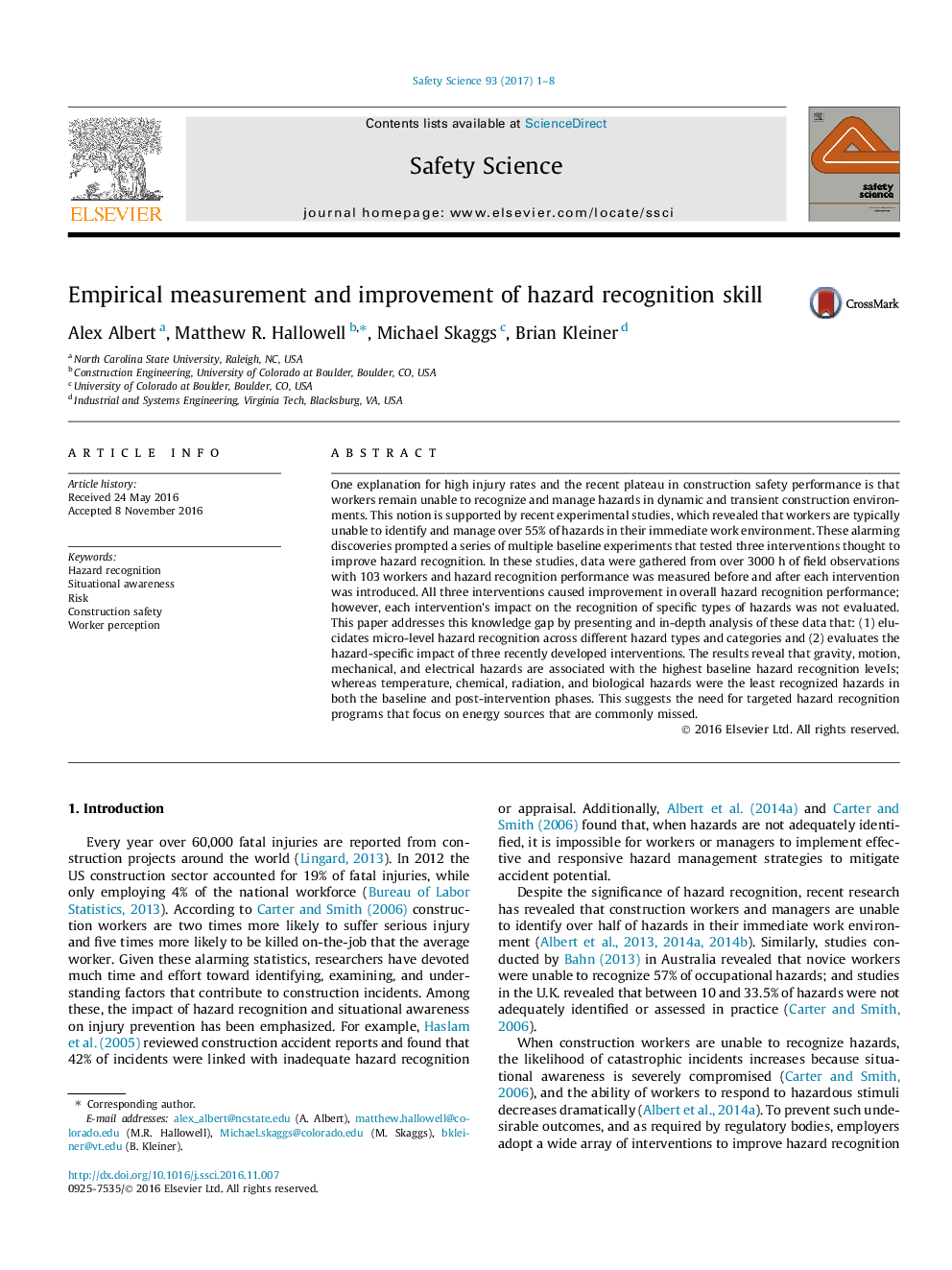| Article ID | Journal | Published Year | Pages | File Type |
|---|---|---|---|---|
| 4981271 | Safety Science | 2017 | 8 Pages |
Abstract
One explanation for high injury rates and the recent plateau in construction safety performance is that workers remain unable to recognize and manage hazards in dynamic and transient construction environments. This notion is supported by recent experimental studies, which revealed that workers are typically unable to identify and manage over 55% of hazards in their immediate work environment. These alarming discoveries prompted a series of multiple baseline experiments that tested three interventions thought to improve hazard recognition. In these studies, data were gathered from over 3000 h of field observations with 103 workers and hazard recognition performance was measured before and after each intervention was introduced. All three interventions caused improvement in overall hazard recognition performance; however, each intervention's impact on the recognition of specific types of hazards was not evaluated. This paper addresses this knowledge gap by presenting and in-depth analysis of these data that: (1) elucidates micro-level hazard recognition across different hazard types and categories and (2) evaluates the hazard-specific impact of three recently developed interventions. The results reveal that gravity, motion, mechanical, and electrical hazards are associated with the highest baseline hazard recognition levels; whereas temperature, chemical, radiation, and biological hazards were the least recognized hazards in both the baseline and post-intervention phases. This suggests the need for targeted hazard recognition programs that focus on energy sources that are commonly missed.
Related Topics
Physical Sciences and Engineering
Chemical Engineering
Chemical Health and Safety
Authors
Alex Albert, Matthew R. Hallowell, Michael Skaggs, Brian Kleiner,
